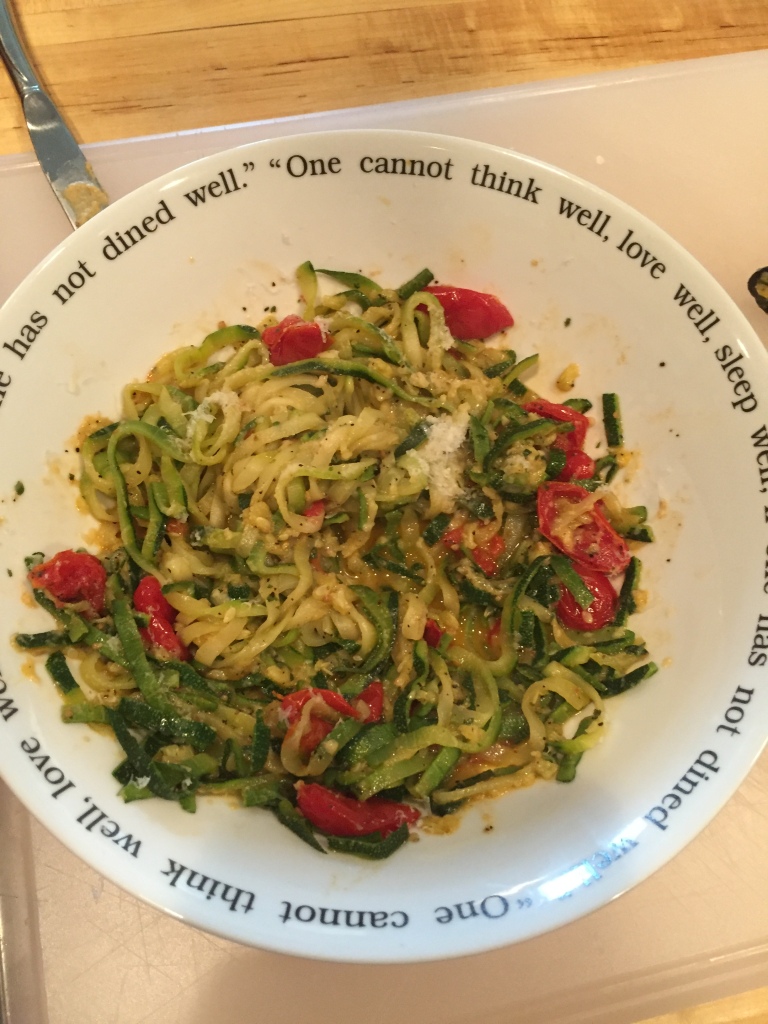Last month for my birthday my kids Ryan & his wife Lindsi got me “The Veggetti”. We all laughed at it and quoted lines like “hey family I made it with my Veggetti” & ” check out my Veggetti”. I believe it sounded so funny cause Veggetti kinda sounded like a nickname for a female part. Do you get it? Sorry if you don’t. Anyway after all that I love this thing. Don’t you love it when something does what it says. It’s easy to use,easy clean up and just stores away in the drawer.
It came with a cute little recipe guide that was really informative.

My first try was with Zucchini squash. I prepared it with my “Veggetti” sautéed it in a little olive oil with my house seasoned (consists of kosher salt,garlic and black pepper) threw in some halved grape tomatoes,grated some fresh Parmesan at the end. It was delish and healthy. I served it along side some grilled lamb pops.
I give it 5 out of 5 stars, because it worked and we love the name. Now go get one!










